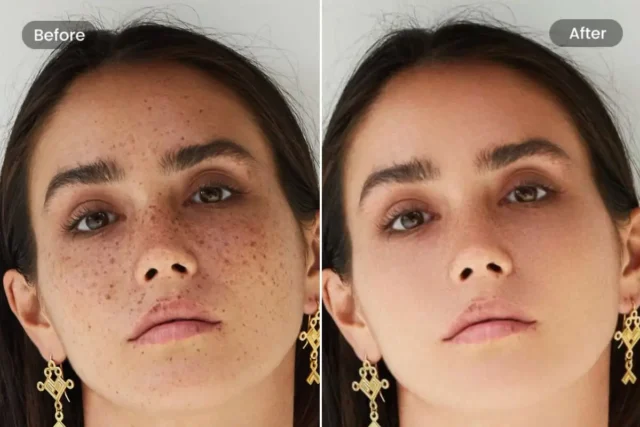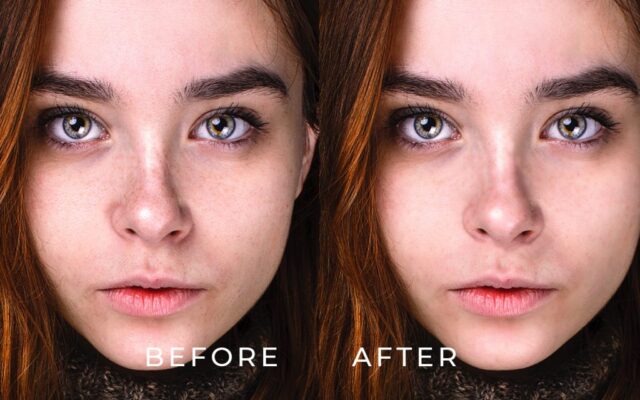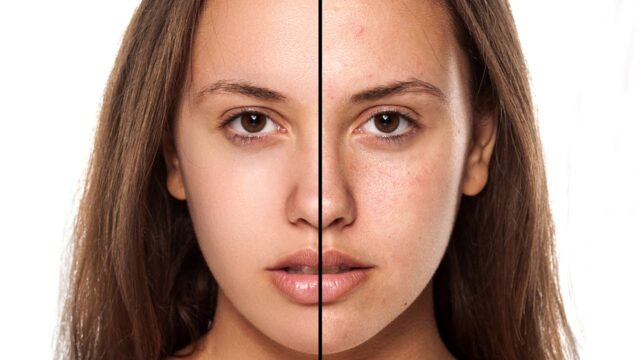
In the era of digital photography, where every snapshot can be transformed into a masterpiece, the realm of portraiture has witnessed a profound evolution.
At the heart of this transformation lies the fascinating art of skin retouching, a technique that can turn ordinary portraits into captivating works of art.
In this article, we delve into the world of face photo editors and explore the intricate process of skin retouching, while also briefly mentioning innovative tools like Luminar Neo that contribute to this captivating endeavor.
The Blend of Technology and Creativity

Portrait photography has long been revered for its ability to capture the essence of a person, freeze-framing moments of emotion and expression.
However, even the most meticulously composed portrait can benefit from a touch of retouching, enhancing the subject’s natural beauty without sacrificing authenticity.
Skin Retouching
The process of skin retouching is an art that requires a balance between technical precision and artistic sensibility. A face photo editor serves as the artist’s virtual palette, offering an array of tools to address common imperfections.
Whether it’s blemishes, fine lines, or uneven skin tones, these editors provide the means to subtly enhance and refine facial features.
Exploring the Tools

Within the toolkit of a face photo editor, several techniques stand out for their role in crafting flawless skin. Healing brushes and spot removal tools work like digital magic wands, gently erasing imperfections while preserving the integrity of the subject’s unique texture.
More advanced methods, such as frequency separation, allow for meticulous control over skin tone adjustments, ensuring a natural and consistent appearance.
- Healing Brushes and Spot Removal: These tools work akin to the gentle touch of an artist’s hand, smoothing away blemishes and imperfections. Just as a painter might blend colors to create a harmonious palette, these brushes blend pixels to create a seamless complexion.
- Frequency Separation Techniques: With this technique, the face photo editor becomes a maestro’s instrument, dissecting the image into different frequencies. This allows for the manipulation of textures independently from tones, enabling a delicate dance of smoothing without compromising the natural grain of the skin.
- Dodge and Burn Methods: Like a sculptor playing with light and shadow, these methods add depth and dimension to the portrait. Highlights are gently emphasized, casting a soft glow on the skin, while shadows provide a subtle contour that enhances facial structure.
Enhancing Facial Features
Skin retouching extends beyond just perfecting skin; it also encompasses the art of enhancing facial features. The eyes, often referred to as the windows to the soul, can be brightened and emphasized, bringing depth and allure to the portrait.
Lips gain vibrancy and definition, while eyebrows are delicately shaped and refined. The goal is not to transform the subject into an unrecognizable entity but to accentuate their inherent beauty.
In the ever-evolving landscape of photography technology, tools like Luminar Neo have emerged to provide photographers with even more powerful capabilities. Renowned for its advanced features, briefly finds its place in this discussion.
However, it’s important to note that the principles of skin retouching with Luminar Neo apply universally across various face photo editors, each offering its unique set of tools to artists seeking to create captivating portraits.
Authenticity and Responsibility

While the potential for transformation through skin retouching is immense, there exists an ethical dimension that cannot be overlooked. Striking the balance between enhancing a portrait and maintaining the authenticity of the subject is crucial.
Responsible retouching respects the individuality of the person being portrayed and refrains from excessive alterations that could perpetuate unrealistic beauty standards.
Collaboration
Another aspect that can profoundly impact the outcome of skin retouching is collaboration with the subject of the portrait. Their input can be invaluable, as no one knows their face, features, and personal comfort levels better than they do.
Engaging in a dialogue ensures that the final image resonates with the individual’s self-perception and is a genuine representation of who they are.
Before looking into the editing process, photographers can have a conversation with their subjects. What features are they most proud of?
Are there particular aspects they’d prefer to be subtly enhanced or, conversely, left untouched? This open communication can set the stage for a retouched image that feels authentic and empowering for the individual being portrayed.
Involving the subject can be an enlightening experience for photographers. They gain insight into the personal stories, struggles, and triumphs that have shaped the individual, allowing for a retouching process that is as informed as it is artistic.
This collaboration ensures that the portrait remains a true reflection of the individual, merging the photographer’s vision with the essence of the subject.
Ethical Editing

In a diverse world, every face tells a story, carrying with it a history of culture, ethnicity, and personal experiences. In the quest to achieve “perfection” through retouching, it’s crucial not to lose sight of the rich tapestry of diverse beauty standards.
It would be a misstep to lighten the skin tones of individuals from certain ethnic backgrounds in an attempt to fit into a narrow perception of beauty. Equally, altering facial features to align with Western standards, such as modifying the shape of the eyes or nose, is an affront to the diverse beauty that our world holds.
Ethical editing means honoring these differences, ensuring that skin retouching does not whitewash or erase the unique features that make every face distinct. Instead, the goal should be to celebrate these differences, using tools judiciously to enhance them without overpowering.
Conclusion

In a world where photography has become a canvas for creativity, the art of skin retouching shines as a testament to both technology and artistic prowess. Face photo editors, equipped with an array of tools, empower photographers to delicately enhance portraits while preserving the essence of the subject.
As we navigate the landscape of innovation, it’s important to remember that the true magic of skin retouching lies not in its ability to conceal, but in its power to reveal the inherent beauty that resides in every face.







